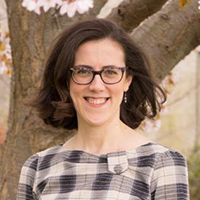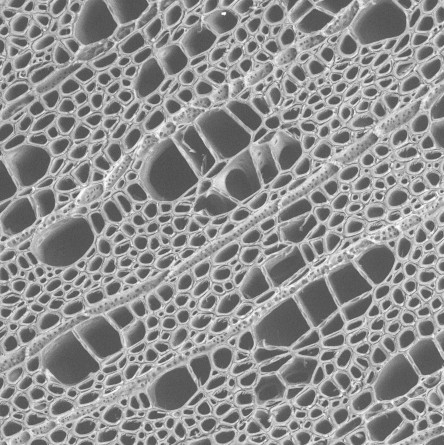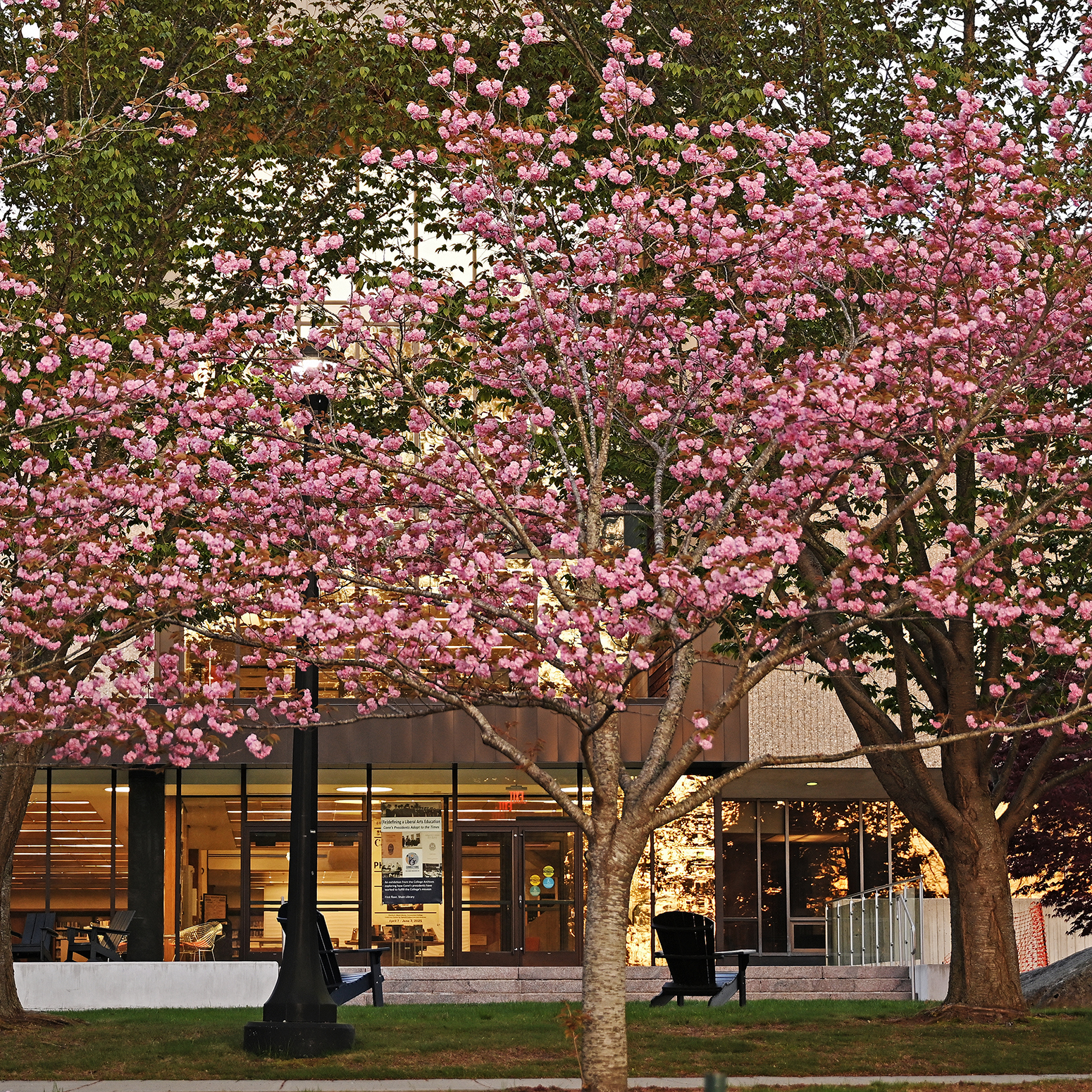
Conn awarded $251K NSF grant for a new scanning electron microscope
Students and faculty will soon see the world in a new light on campus. The College has won a grant to purchase a scanning electron microscope (SEM) with energy dispersive spectroscopy (EDS) capabilities. It will replace the current, now-defunct SEM in New London Hall acquired in 1996, which was one of the first computer-controlled SEMs obtained by a primarily undergraduate institution. The new SEM will enable interdisciplinary scientific research and training in chemistry, biology, botany, environmental sciences and anthropology.
Compared to regular microscopes, the SEM provides much higher magnification, easily imaging structural features 1/100 the diameter of a human hair, explained Professor of Chemistry Stanton Ching. This is because the SEM uses electrons for imaging, which have higher energy and a shorter wavelength compared to visible light. The scanning feature allows observers to move the beam of electrons across a sample, creating images analogous to a drone recording footage over a landscape.
“Students will love using this instrument. It’s not that hard to teach them how to use it, and it’s very visual,” Ching said. “It's funny; students pick up on using it in some ways faster than I did, because it’s almost like a video game.” The EDS feature provides additional capability to determine the elemental composition of the sample surface. This is because X-rays given off when the sample is struck by the electron beam can be analyzed for atomic elements.
The $251,418 award is given by the National Science Foundation’s Major Research Instrumentation Program. Ching and Associate Professor of Botany and Botany Department Chair Rachel Spicer are leading the project with support from Professor of Botany and Environmental Studies Peter Siver, Associate Professor of Biology Taegan McMahon, Assistant Professor of Biology Maria Rosa, Assistant Professor of Botany Eric Vukicevich, and Associate Professor of Anthropology and Chair of the Anthropology Department Anthony Graesch, who is also the College archaeologist.
The microscope fulfills major needs for distinct departments and programs at the College led by these seven professors by supporting research in the following areas:
- porous manganese oxide materials with potential use in catalysis, environmental remediation and rechargeable battery technology (Ching)
- photosynthetic microorganisms in water samples and ancient sediment cores (Siver)
- wood formation in the model tree Populus (Spicer)
- feeding mechanisms and structures in marine invertebrate larvae (Rosa)
- morphological differences in strains of a pathogenic fungus threatening amphibian populations (McMahon)
- early invertebrate colonization of 3D-printed scaffolds for marine restoration applications (Rosa and McMahon)
- uptake of heavy metals in soil role by mycorrhizal fungi (Vukicevich)
- archaeological studies of Indigenous and settler societies in North America (Graesch)
Additionally, Conn will invite students and faculty with the University of Connecticut at Avery Point and the U.S. Coast Guard Academy to collaborate and share use of the microscope. Undergraduate students will be trained in electron microscopy through classwork, labs and faculty-mentored independent research. Student-faculty research often results in peer-reviewed publications co-authored by students.
Collaborations with UConn and the Coast Guard Academy, as well as public outreach to local high schools via community partnership programs, will support the broader scientific community. The microscope will also allow multiple early-career faculty to expand the scope of their research, all of which focuses on challenges of environmental sustainability, health and safety in both natural and urban environments.
“In the grant proposal, we described teaching and research as a unified activity,” Ching said. “Professors have our research, and then teaching is research training. Students will be able to use this instrument in classes and then in research, similar to what we do with a lot of our other big-ticket instruments at Conn.”
Ching expects the microscope to be on campus this fall and ready for use in the spring after setup and training.

